Judging Beef Heifers
Judging Beef Heifers
Key Points for Judging Beef Heifers
- Evaluate heifers first from the ground up and then from the rump (rear) forward.
- Rank the traits for their importance.
- Evaluate the most important Traits first.
- Eliminate any easy placings.
- Place the class based on the volume on the important traits.
Ranking of Traits for Judging Beef Heifers
- Soundness and structural correctness.
- Capacity or volume.
- Style and balance.
- Degree of muscling
- Femininity.
Evaluating Soundness and Structural Correctness
When evaluating soundness and structural correctness, attention should be given to:
- Front and rear leg columns
- Feet
- Pasterns
- Hocks
- Knees
- Rump
- Shoulders
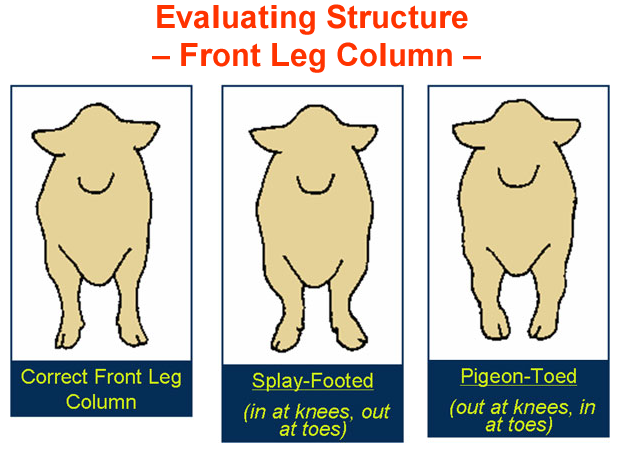
Problems associated with incorrect front leg column structure in heifers:
- Splay-footed:
- Added pressure on knee joints
- Wears off inside toes
- Pigeon-toed:
- Added pressure on knee joint
- Wears off outside toes
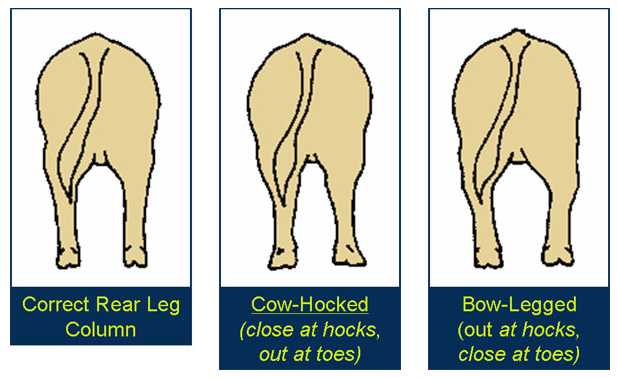
Problems associated with incorrect rear leg column structure in heifers:
- Cow-hocked:
- Added pressure on hock joint
- Wears off inside toes
- Bow-legged:
- Added pressure on hock joint
- Wears off outside toes



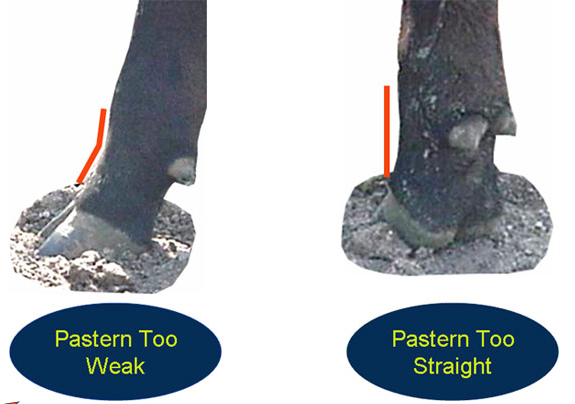

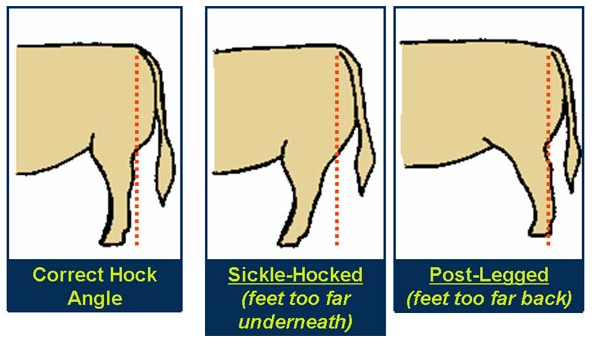
Problems associated with incorrect hock angle in heifers:
- Sickle-hocked:
- Added pressure on hip and rump
- Poor heel depth
- Post-legged:
- Limited flexibility and increased stress on hock joints
- Often hock swelling and (or) lameness
- Wears off front of toes


Evaluating Structure - Rump
When evaluating rump structure we are concerned with having the proper slope from hooks to pins:
- If too much slope:
- Added pressure on rear leg column joints
- Added stress on hip-loin junction
- Can result in sickle-hocks
- If too little slope:
- Added pressure on rear leg column joints
- Can result in post-legged hocks

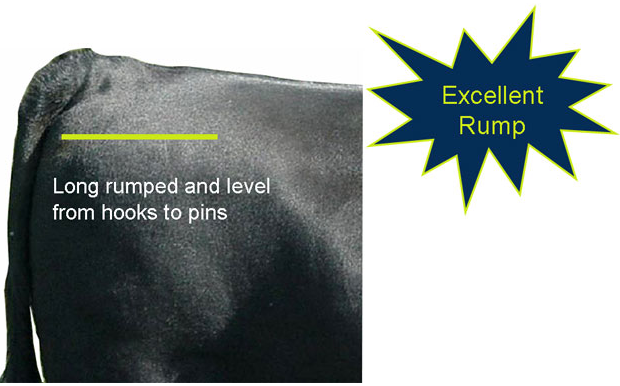
Evaluating Structure - Shoulders
When evaluating shoulder structure we are looking for heifers that have:
- The proper set (or slope) to the scapula:
- Improper set puts added pressure on elbow, knee, and pastern joints and decreases flexibility.
- Often associated with other structural defects.
- The proper refinement (or lack of coarseness):
- Heifers don't need big, coarse shoulders

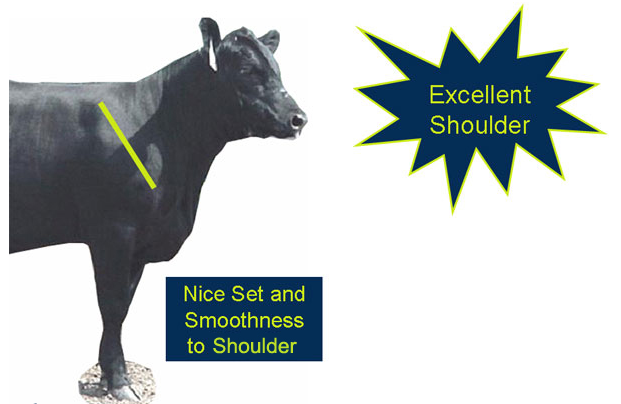
Evaluating Capacity or Volume
Capacity (volume) is determined by 3 factors:
- Body Width (rib shape)
- Heifers should be wide-bodied with good spring of rib.
- Depth of body
- When viewed from the side, body depth should be at least 1/2 of the distance from the top of the back to the ground.
- Length of body
- Heifers should be long-bodied.
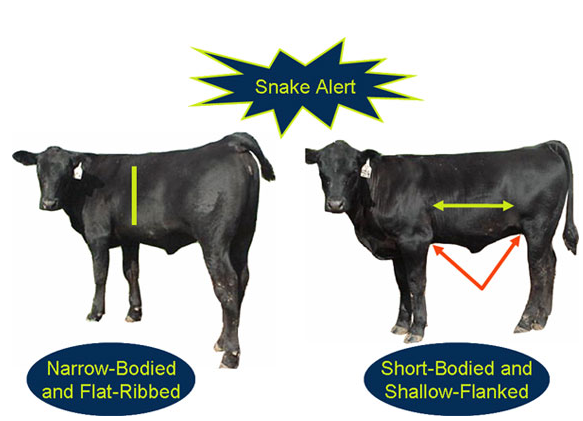

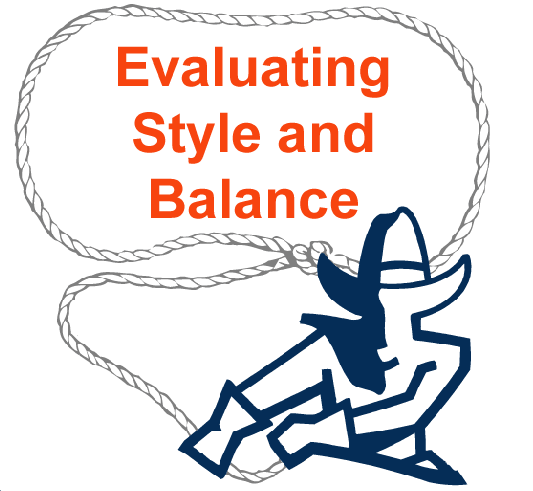
Style and balance refers to how well all the pieces of the heifer fit together. Points to consider include:
- Straightness of top-line.
- Balance between body width, body depth, and body length.
- Smoothness and angularity of front.
- Blending of the shoulder, ribs, and hip.

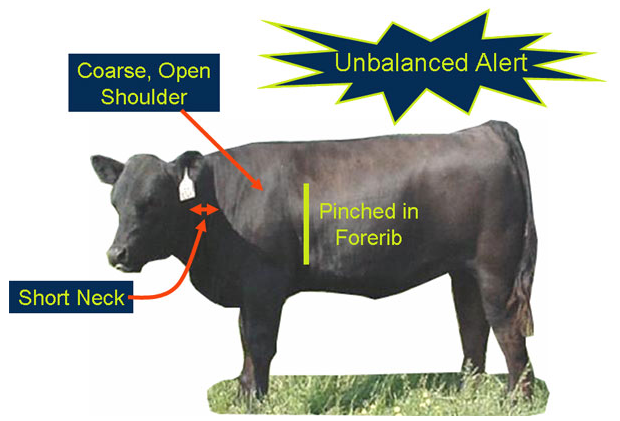
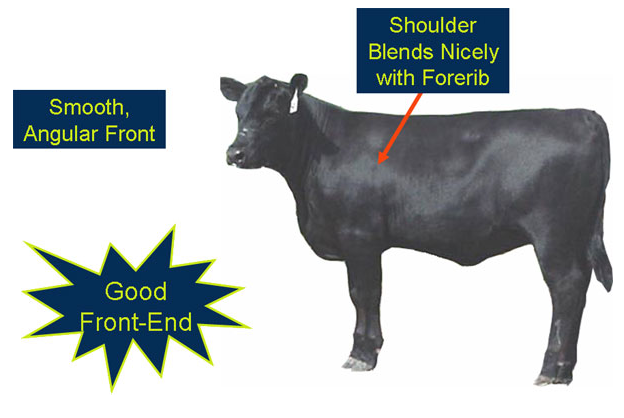

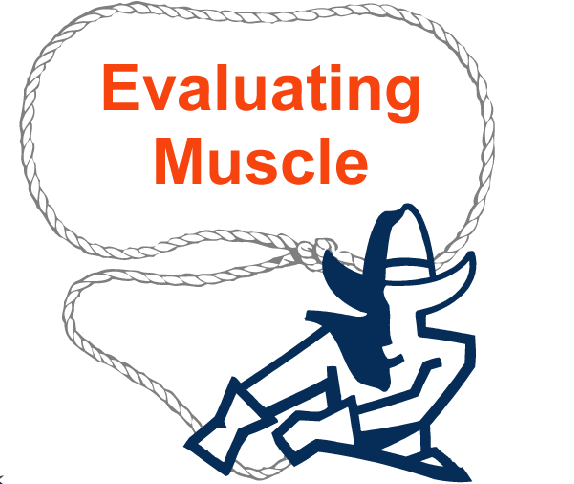
To determine degree of muscling, evaluate the following:
- Thickness through the center of the quarter when viewed from the rear.
- Width between rear feet when the heifer walks and stands.
- Shape over the top (shape of the loin).
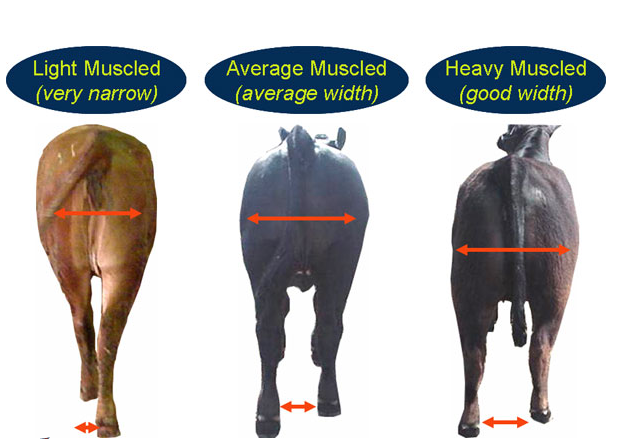
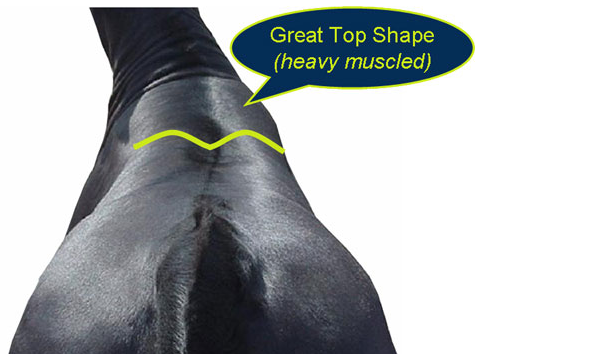
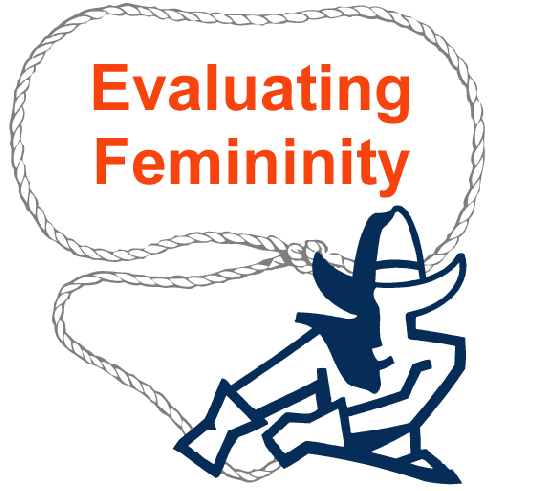
When evaluating femininity in heifers, pay careful attention to the following:
- Refinement of the head.
- Length of the neck.
- Angularity of the neck and shoulder.
- Blending of the shoulder to the forerib.
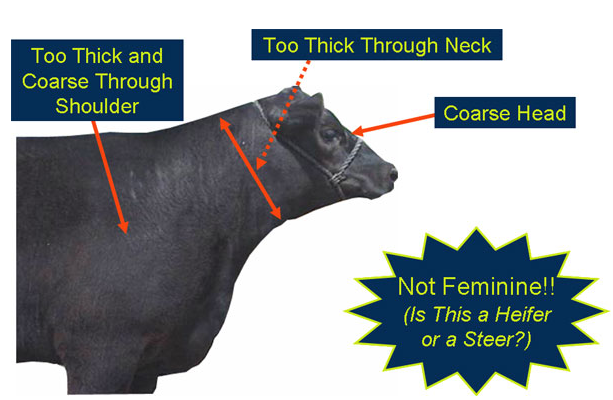
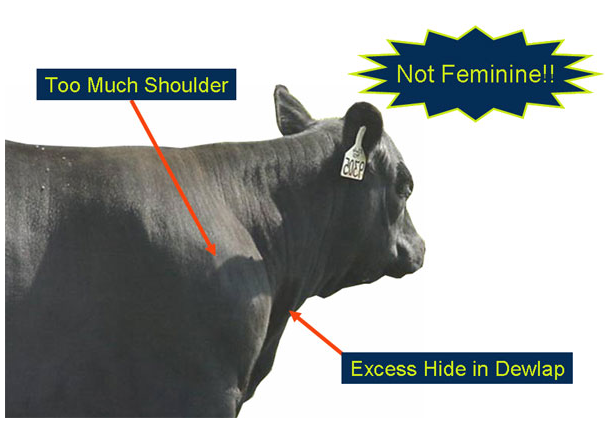
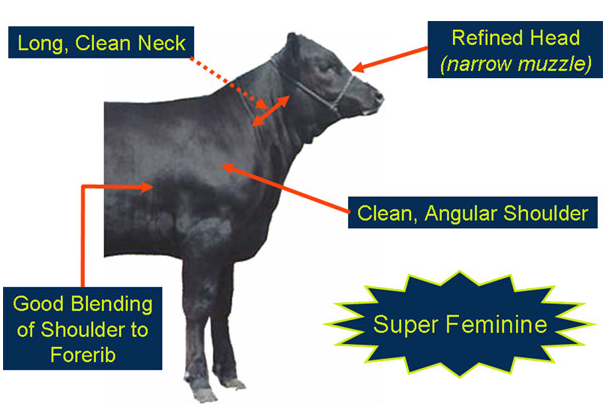
Foot Score Guidelines
- Foot Score Guidelines (American Angus Association)
Final Tips for Judging Heifers
- Remember the important traits.
- Know what "correct" looks like.
- Look at lots of beef heifers.
- Practice your judging skills
